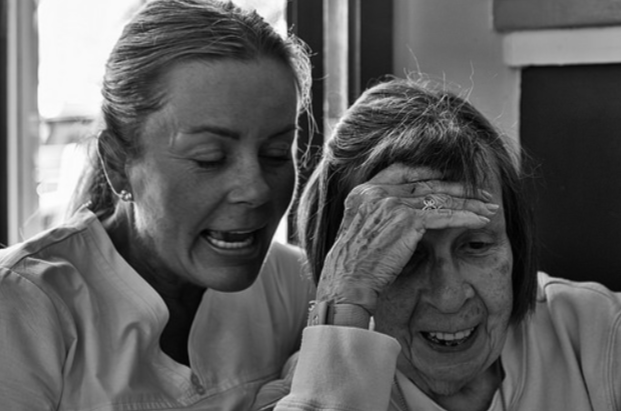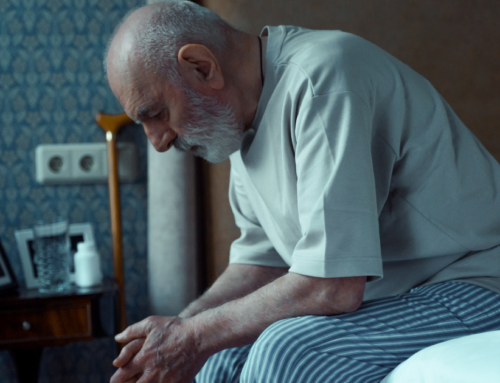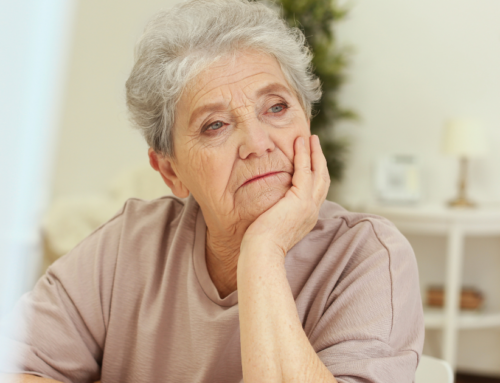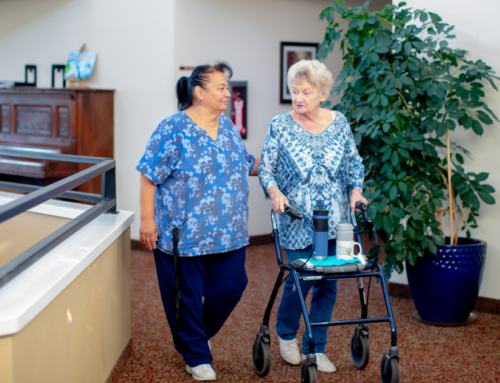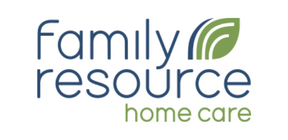As people age they become less sensitive to touch, yet, like young children, they may be the ones who need it the most.
When we are children, the warmth and love of a parent’s touch is key to our growth into emotionally healthy people. Touch continues to be an important part of our lives as we pass through the stages of young adulthood, marriage, and parenthood. But what happens as we grow older and those with whom we once shared a warm physical connection – our spouses, children, and friends – pass away or move on in their own lives?
In The Power of Touch published in the December 2015/January 2016 issue of AARP The Magazine, the authors David Linden and Martha Thomas write, “When you’re younger, it might be easy to take touch for granted. The skin is our largest sensory interface with the world. And it’s always on. We can close our eyes or plug our ears to imagine losing sight or hearing, but it’s hard to imagine losing the ability to feel. It’s thought to be the first sense that we develop in the womb. Touch is crucial for forging that first emotional bond with a parent and for creating the unique human experience.”
Studies show that a kind touch or hug can impact the well-being of the recipient. Touch lowers levels of the stress hormone cortisol and increases the amount of oxytocin, a neurochemical that promotes trust and cooperation. A warm touch can make others feel valued and cared for and lessen the feelings of discomfort, and stress.
Studies have also found that touch can actually reduce the signs and symptoms of illness. On the caregiver website, caring.com, the article The Power of Touch in Elder Caregiving, quotes Tiffany Field, director of the Touch Research Institute at the University of Miami School of Medicine who says “studies show that touch reduces pain, especially following strokes, and lowers blood pressure.” The article cites a study she conducted that evaluated the effectiveness of massage as a tool in medicine. It found that massage therapy resulted in significant decreases in Parkinson’s tremors and also “decreased pacing, wandering, and combative behavior, symptoms associated with Alzheimer’s disease.”
The article goes on to say that as we age, “our sense of touch degrades. At about age 20, we start to lose nerve endings in the skin at a rate of about 1 percent each year. The loss is so gradual that we might not even notice, but the muting of our sense of touch over time can take a corresponding toll on quality of life. The cruel irony, of course, is that as sensitivity fades, the more we need to be touched.”
So what can we do about seniors need for more touch? In Nursing and the power of touch, Keith Carlson, RN, makes the point that nursing has historically used touch as an important tool in caring for patients. “From an encouraging hand on a shoulder to a cool hand on a feverish forehead, touch is a hallmark of caring, healing, and compassion. Even as technology becomes more central to health care, skin-to-skin contact is an art that must remain a central tenet of nursing care.”
Whether the person interacting with the older adult is a family member, professional caregiver, nurse, social worker or anyone else, it is easy to find opportunities to provide a warm and caring touch. From a squeeze of a hand, a stroke of an arm, or a pat on the back to a hug or full-fledged foot or neck massage, appropriate touch has a place in elder care. And it is not only the elder that benefits. Touch is a two-way street. The person offering the hug or warm touch also profits from the human contact. In fact, in a comment left online in response to an article on touch, a nurse wrote, “I loved the article on touch and its importance in nursing. Having served in a two-month deployment in Ebola care, touch was a no-no. And it affected me more than the patient.”
photo credit: ExarchIzain Mom needs help via photopin (license)

